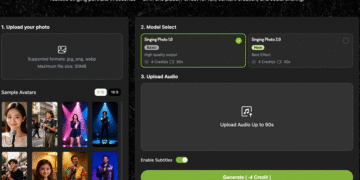In the fast-moving world of freelance work, a portfolio isn’t just a nice-to-have—it’s your handshake, pitch deck, and business card all in one. But with so many creatives, strategists, developers, and consultants vying for attention, it’s not enough to show what you’ve done. You need to show how you think, why you do it your way, and what makes your work worth remembering.
If your portfolio hasn’t been updated in a while (or you’ve just been adding new projects and nothing else), now’s the time to shake things up. These three additions can give your work more context, more personality, and more punch.
Make Your Online Portfolio Work Harder
Whether you’re a designer, copywriter, developer, or marketer, your online portfolio should do more than list past projects. It should help people understand your strengths at a glance. That means curating—not just showcasing—and adding the kind of content that makes your work easier to evaluate.
Start by making sure each piece includes a brief explanation. Why did the client need this? What was your role? What challenge did you solve, and what did the outcome look like?
When you frame your work as a response to real problems, you show more than skill—you show strategy. And that’s something hiring managers, creative directors, and even other freelancers love to see.
Beyond that, consider how your portfolio is organized. Are your strongest projects at the top? Is it clear what kind of work you want more of? Do you give visitors a way to reach out or learn more? These small UX tweaks can make a big difference in how long someone stays—and whether they take action.
And if you’re offering freelance services that involve billing or client management, highlighting how you streamline your workflow with tools like online invoice generation platforms can position you as someone who values efficiency and professionalism.
1. Add a Behind-the-Scenes Case Study
A polished end result is great. But showing how you got there? That’s what turns heads.
Choose one or two projects you’re especially proud of and write up a short case study for each. You don’t need to go full essay mode. Just give enough detail to walk someone through the project from problem to solution. Talk about the process, the obstacles, the decisions, and even the client’s reaction.
Not only does this show off your thinking—it also gives prospects something to connect with. And if they’re facing a similar problem, they’ll already trust that you know how to solve it.
Extra tip: Make it skimmable. Use bullet points, bold key results, and break the text up with visuals.
You can also go beyond the basics and include metrics if available. Did your design increase conversions? Did your content rank well in search? Did your campaign outperform expectations? Even if the numbers are modest, they offer proof of impact.
If you’re in a field where quantifying results is tricky (like illustration or branding), focus on qualitative outcomes. Did the project lead to more recognition? Did the client use the work in unexpected ways? These stories still matter.
2. Include Testimonials or Social Proof
No one can sell your services better than a happy client. Yet so many freelancers leave testimonials off their sites—or bury them so deep no one ever sees them.
Don’t wait for someone to scroll to the footer. Place one or two standout quotes right alongside your featured work. If someone praised your communication, speed, or ability to turn vague ideas into gold—highlight that.
Even better? Pair the quote with the project. That way, a visitor sees the end result and hears directly from the person who paid for it. That combo builds instant credibility.
If you’re just starting out and don’t have formal testimonials yet, you can still ask for informal feedback. A short message from a former coworker or collaborator counts. Just make sure it speaks to your value in a clear, specific way.
Also consider different formats. A screenshot of a happy email, a video message from a client, or even a tweet that raves about your work can be repurposed with permission. Keep it varied, keep it visible.
3. Share Your Point of View
This one might feel scary, but it’s the one that sets the best freelancers apart: share a little of what you believe.
What excites you about your craft? What trends do you think are overhyped? What principles guide your work? You don’t have to get preachy—just let people see your brain at work.
Add a blog section, a Q&A, or even a short video where you talk about a project or idea. This content doesn’t have to go viral. Its job is to show people who you are, how you think, and why that’s valuable.
Clients and collaborators aren’t just hiring skills. They’re hiring mindsets. When you let your values and curiosity show, you give them one more reason to choose you.
For example, outlining how your work ties into thoughtful, customized digital branding and design shows that you understand the bigger picture—not just your part in it.
And if you’re worried you don’t have anything “big” to say, that’s okay. Small ideas—like why you always start projects with questions, or how you organize your creative process—can be just as engaging. Your voice is what makes the insight valuable.
Bonus: Add a “Works in Progress” or Personal Projects Section
Not everything you share has to be client work. In fact, showing your personal projects or creative experiments can make your portfolio feel more alive.
Think of this section as a playground. Post things you’re tinkering with, concepts you haven’t polished yet, or even rough ideas that never made it to production. These show that you’re constantly exploring.
It also signals that you’re self-motivated—someone who works creatively even when there’s no deadline or brief. That’s a trait that many clients value highly.
Even better, these pieces can start conversations. A visitor might see something unfinished and want to help shape it. That’s how collaborations begin.
Make Navigation Part of the Experience
Another overlooked part of portfolio building is how people move through your content. If your navigation is clunky, unclear, or overloaded with options, even the best work can get buried.
Think like a user. Is it obvious where to go first? Do project pages lead back to a main portfolio? Are contact links always easy to find?
Clean, consistent navigation helps keep people engaged. It also gives your site a more professional, put-together feel. You’re not just showing great work—you’re creating a great experience.
Consider using category filters (like “branding,” “UX,” or “content strategy”) to let visitors quickly find what matters most to them. Add tags or keywords if you have a larger archive. And don’t forget to test your site on mobile—many visitors will discover you on their phone.
Conclusion
Too often, portfolios become digital filing cabinets—full of outdated samples and broken links. But your portfolio isn’t a museum. It’s a living document. It should grow with you, evolve with your skills, and reflect where you’re going—not just where you’ve been.
So take the time to revisit it regularly. Trim what’s no longer relevant. Highlight what reflects your best work right now. And don’t be afraid to test new formats, new content types, and new ways of telling your story.
Because when your portfolio feels fresh, intentional, and truly you—it stops being just a portfolio. It becomes a magnet for the kind of work you actually want.
And the best part? You don’t have to do it all at once. One tweak a week is enough to build momentum. Over time, those little updates become a major upgrade. So start today—because the work you want next could be just one great project page away.









































































